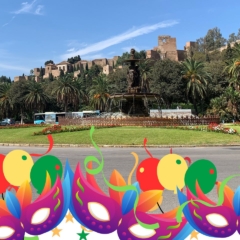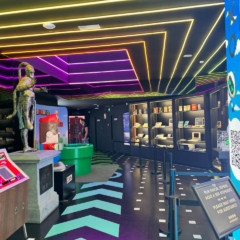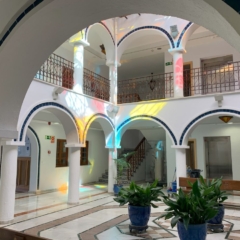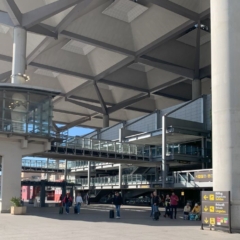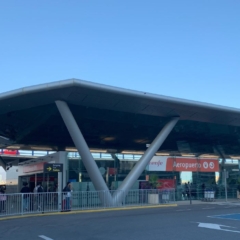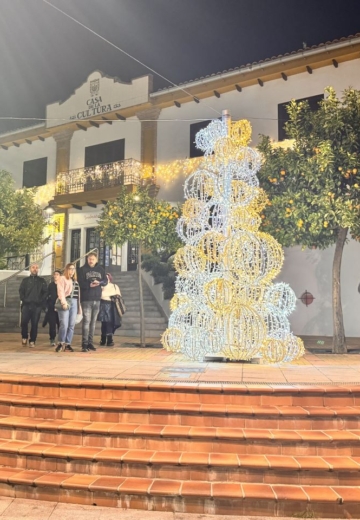Alcazaba of Malaga
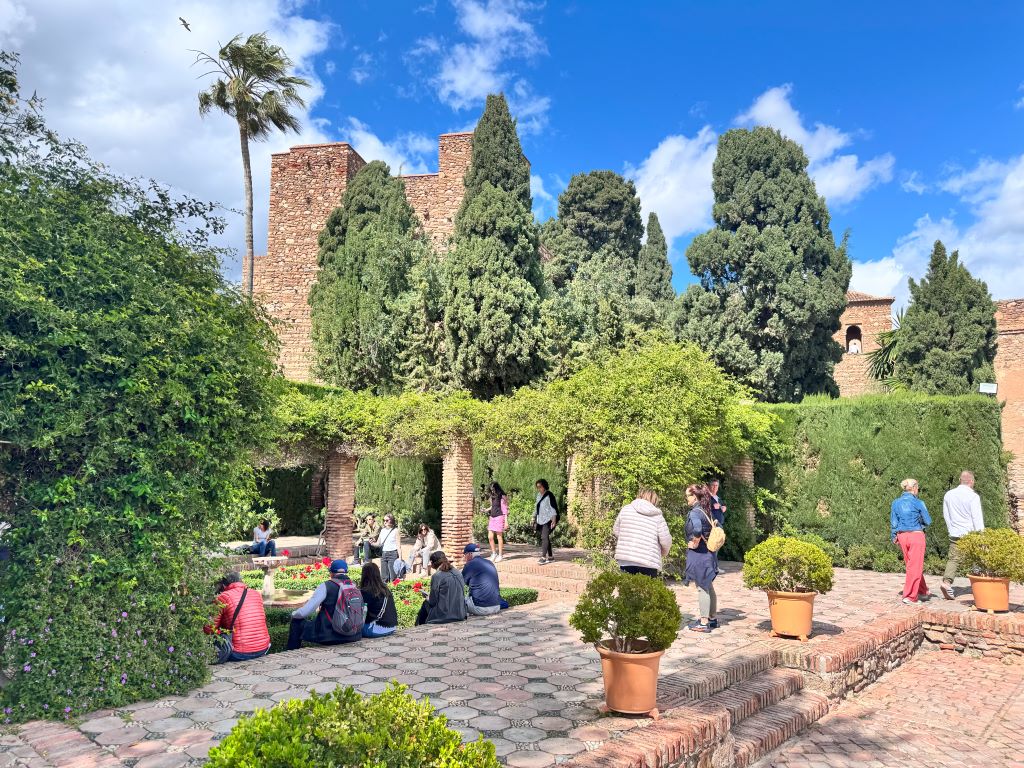
The Alcazaba of Malaga is the most emblematic and notorious place in the city of Malaga, a must-visit for those who come to the city. It is a 1000+ years old castle and urban fortress full of history, a stronghold with amazing views of the coast and the pride and joy of the population of Malaga. Have you been there yet?

A bit of history
The Alcazaba of Malaga is so old that when talking about its history, we have to differentiate epochs: first came the Phoenicians that did an initial settlement in the area where today we have the Alcazaba. It was a fortified area, but nothing as massive as it would become later. The second group was the Romans, that built on what the Phoenicians had left and added the (Roman) Theatre, right by the Alcazaba.
The third, and main builders, were the Moors, which made (and named) the Alcazaba we see today. They used what the Romans had left – including some columns from the Roman Theatre – and added a lot, transforming the space into one of the best examples of fortification architecture of the time. Alcazaba comes from the Arabic and means castle / citadel or urban fortress.
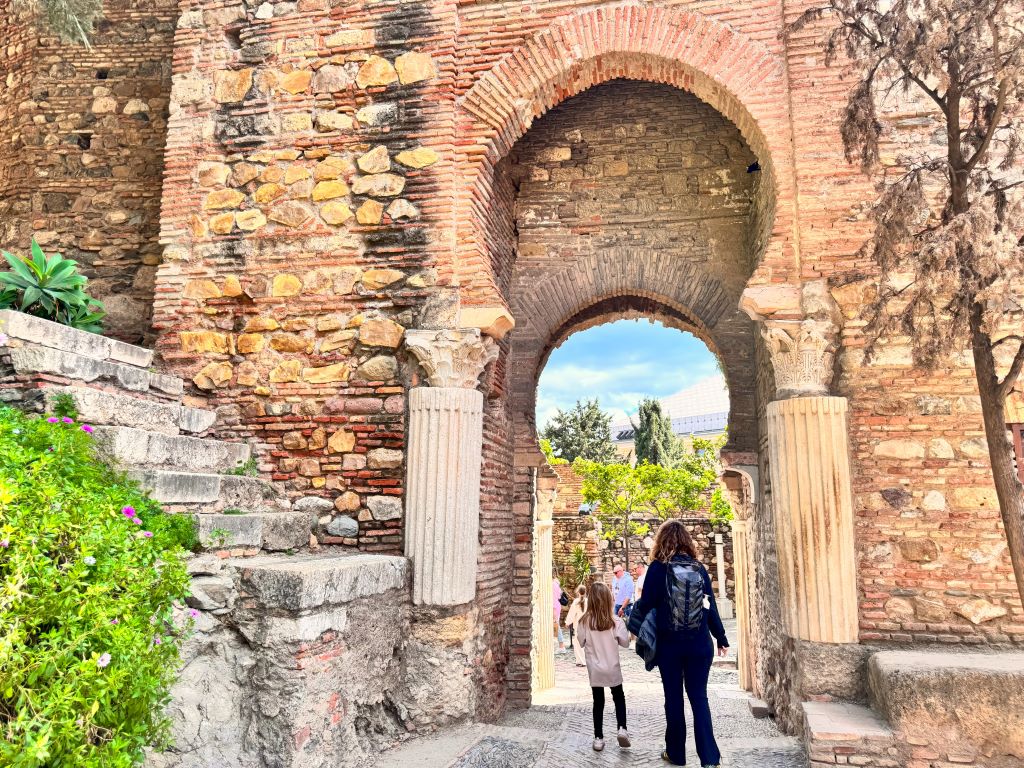
After the Spanish Catholic Kings conquered Andalusia, the Alcazaba was neglected for a long time. In the beginning of the XX century, it became a neighborhood of Malaga, with people living and building houses in its interior. It was only in the second half of the past century, once the touristic boom started in the Costa del Sol, that the local authorities started to focus on preserving and restoring the monumental fortress. Nowadays, the Alcazaba is beautifully restored and open to the public, though some areas within the complex are still closed for visitation and under restoration.

Castillo de Gibralfaro (Gibralfaro Castle)
Gibralfaro Castle just became a castle after the Spanish conquered it. The Spanish King decided to turn the previous fortified headquarter space into a castle given its defensive capacities. It is (or was) linked by a tunnel to the Alcazaba, but this tunnel is not open to the public (at least yet). The way to go from the Alcazaba to the Castillo, nowadays, is leaving the Alcazaba and going around, following the paved path that leads there.
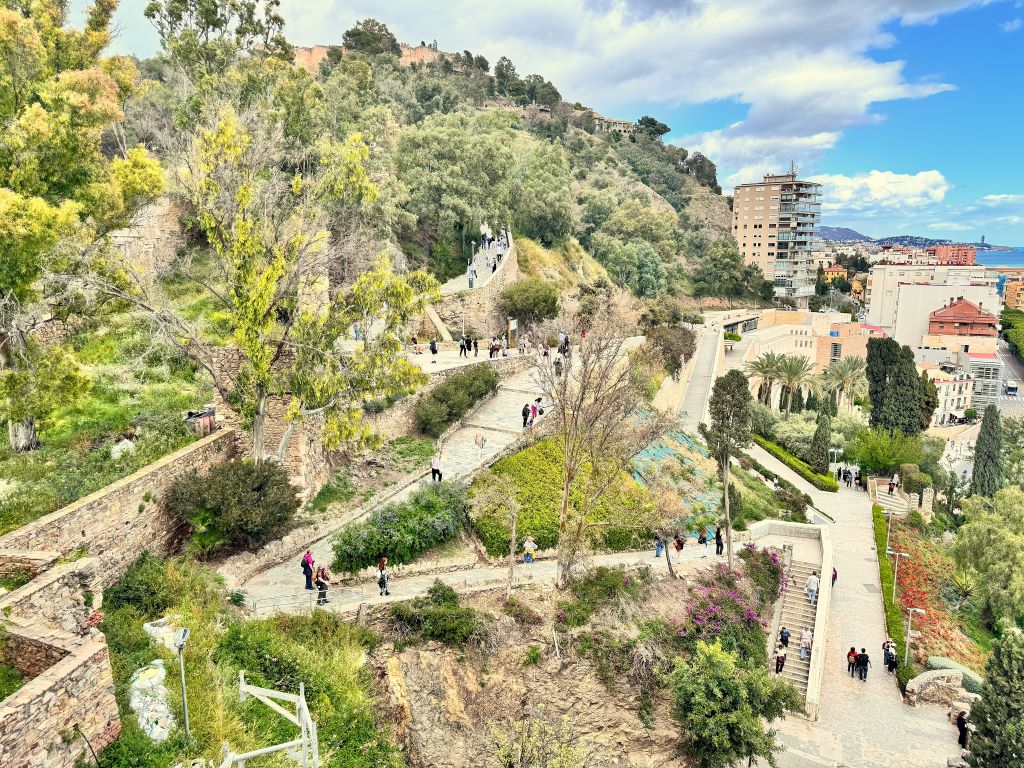
Roman Theatre
The Roman Theatre, dated from around the first century and located right by the Alcazaba, completes the set of historical monuments of the Alcazaba complex. Like the Alcazaba and the Castle, it is also possible to visit the Roman Theater – and it is free. This theater was used as quarry by the Moors and has been used as a theater as recently as the years preceding the covid pandemic. Antonio Banderas is said to have performed here as a child!

Into the Alcazaba of Malaga
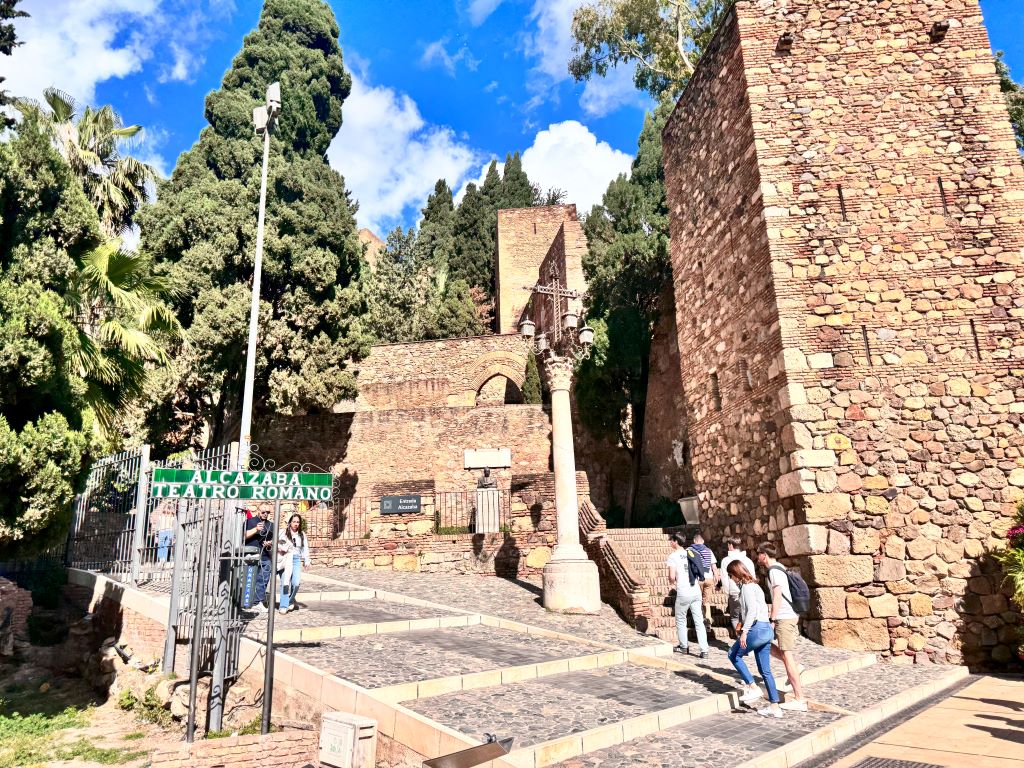
The Alcazaba has a very strategic location: on top of a hill, with an ample view of the sea, a place that would offer protection from maritime attacks because of its height, while allowing for strikes from the distance. Due to its defensive qualities, it was the location destined to house the local Moorish rulers – there were several during the thousand years they owned the Alcazaba – and their court.

The area allowed for the construction of a large citadel; a true settlement, encompassing all that was needed to resist a long-time attack. Within the walls of the Alcazaba there were granaries and a water well, plus plenty of space to house much of the city’s population in case of a foreign incursion.
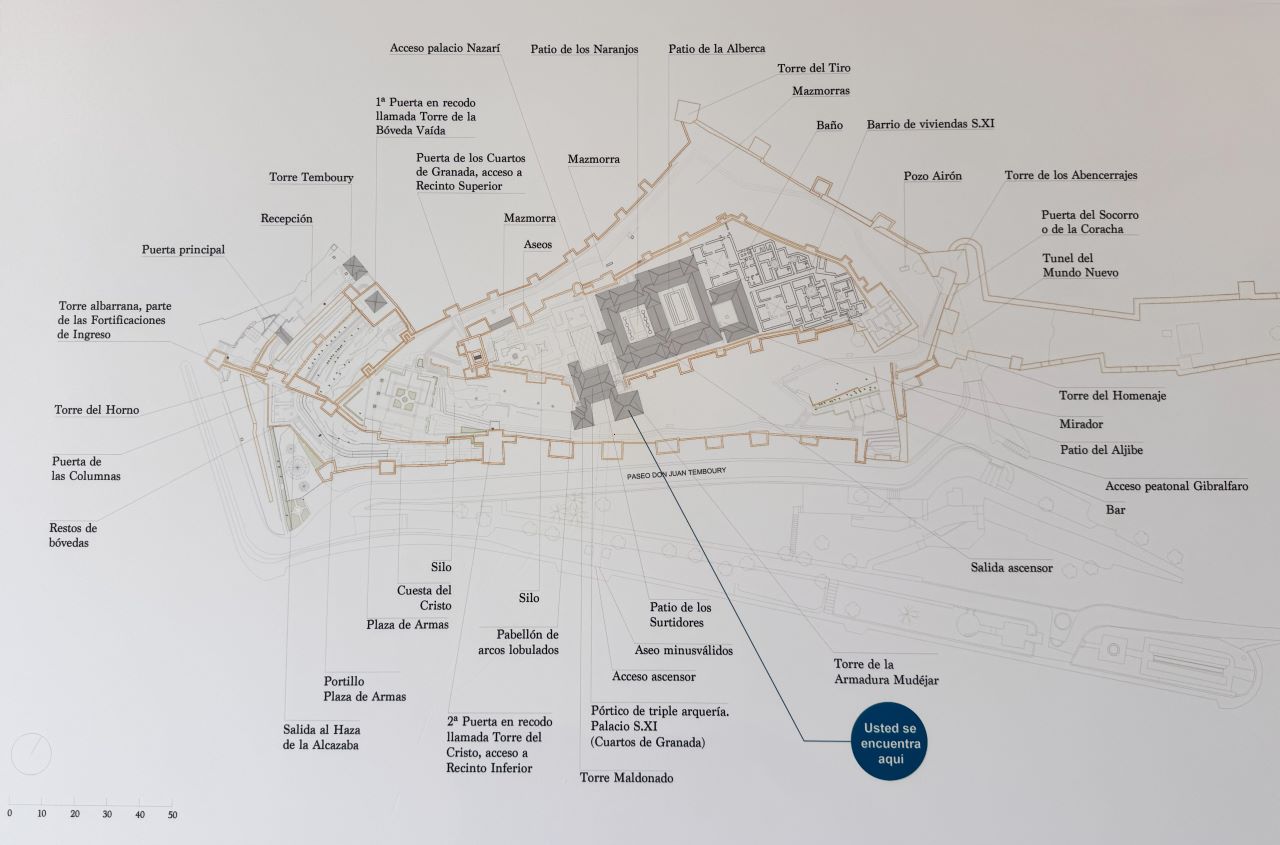
And that is not all the advantages of this location: due to the existence of a second, neighboring hill, the builders of the Alcazaba made a second fortress, destined to hold the Alcazaba headquarters. They called this hill Gibralfaro (which means something like “Lighthouse Hill”, because the Phoenicians had built a lighthouse there).
Both the Alcazaba and Gibralfaro were connected by one underground tunnel whose entrance is disguised in the maze-like construction that constitutes the Alcazaba. This all means that even if an invader army were too somehow breach through the lines of walls protecting the Alcazaba, there would still be time for the Moorish ruler to run to Gibralfaro before the invader could figure their way around the fortress.
The two lines of walls of the Alcazaba of Malaga
The Alcazaba is surrounded by not only one, but two – in some areas, three – lines of walls, with towers from which the defendants could either launch cannonballs on ships or throw hot oil and shoot arrows at troops that tried to approach.

If invaders tried to access the Alcazaba through its only entrance, they would soon find themselves in a space between two walls, both topped with towers, an area too narrow to turn a battering ram around to pound on doors. The invaders would need to try to break doors without their main tool while under attack from above.
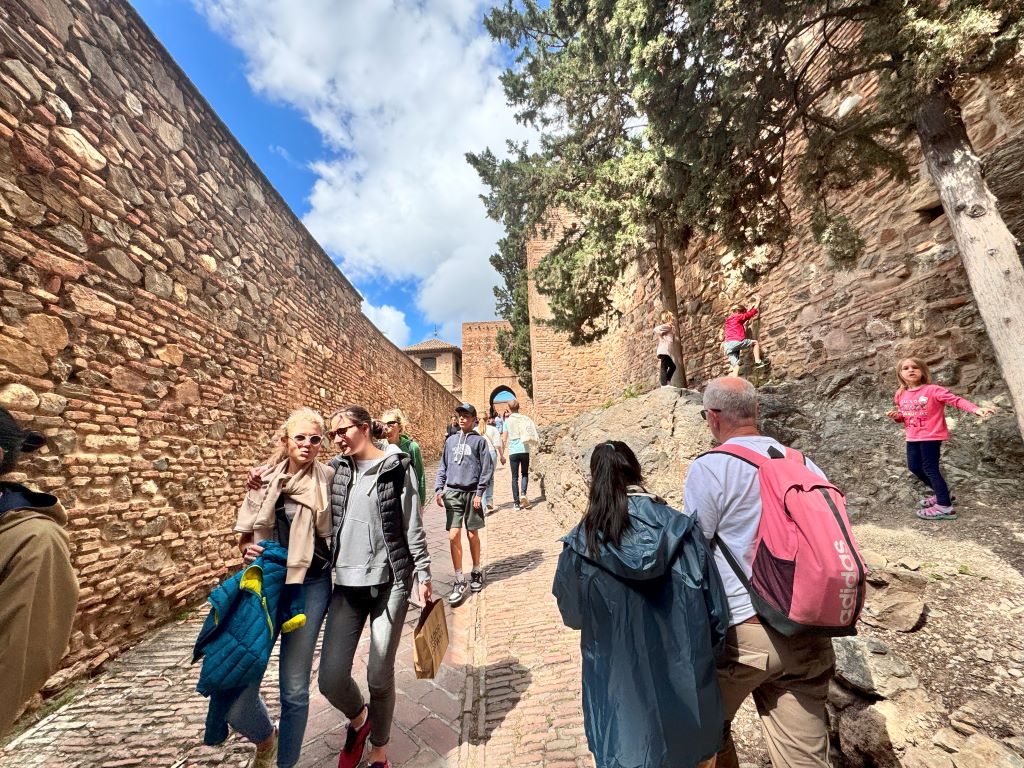
This same situation would meet the invaders several times on the way to the center. The lines of walls form a maze within the complex, so that an already large area becomes even larger to conquer on foot, meeting doors and towers (and oil and arrows) all along.
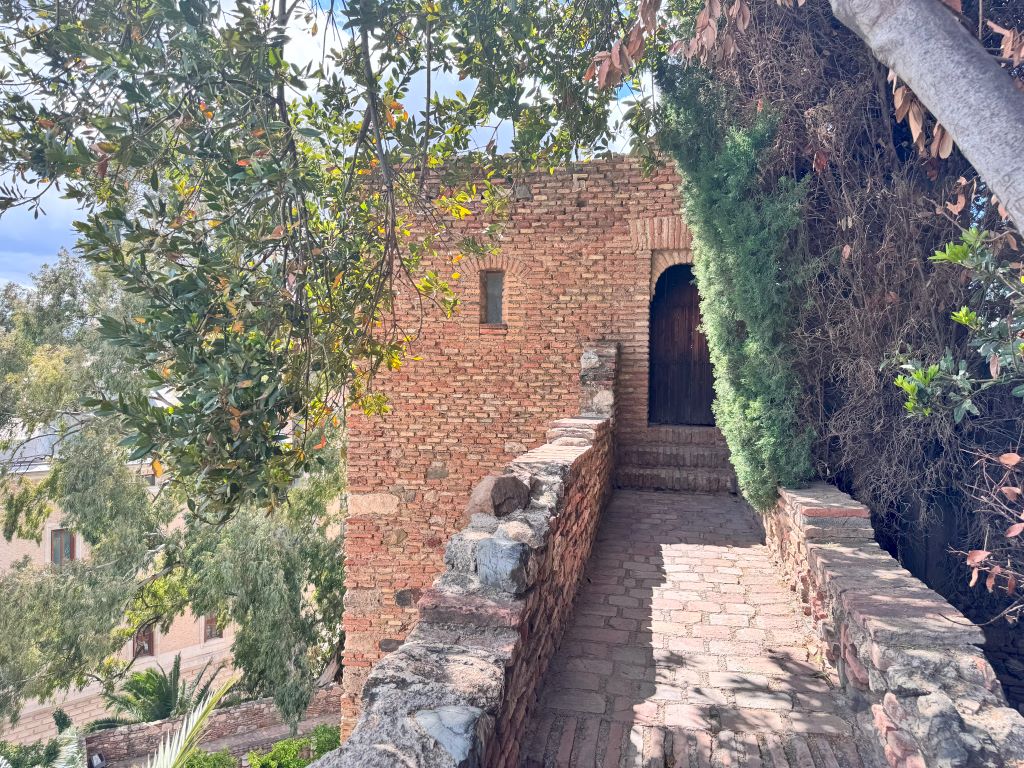
It’s no surprise it took a thousand years to conquer the fortress; and yet, it was not breached. It was the accumulate losses of the Moors Empire and the subsequent lack of supplies, funds and people to upkeep the Moorish army that made it possible for the Alcazaba to fall in the hands of the Spanish conquerors. The Alcazaba surrendered in 1487.
Gardens of the Alcazaba
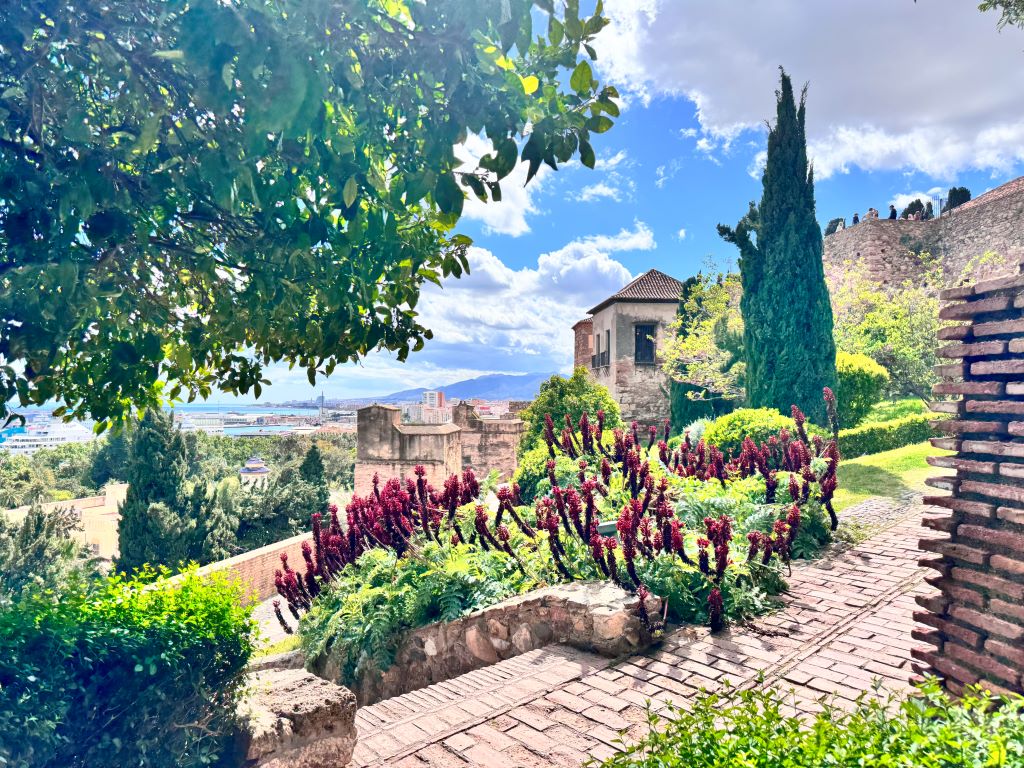
There are many gardens and plenty of green beyond the second layer of walls. The space opens and shows another side of the Moors architecture: that of building pleasant, lush green gardens permeated with water.
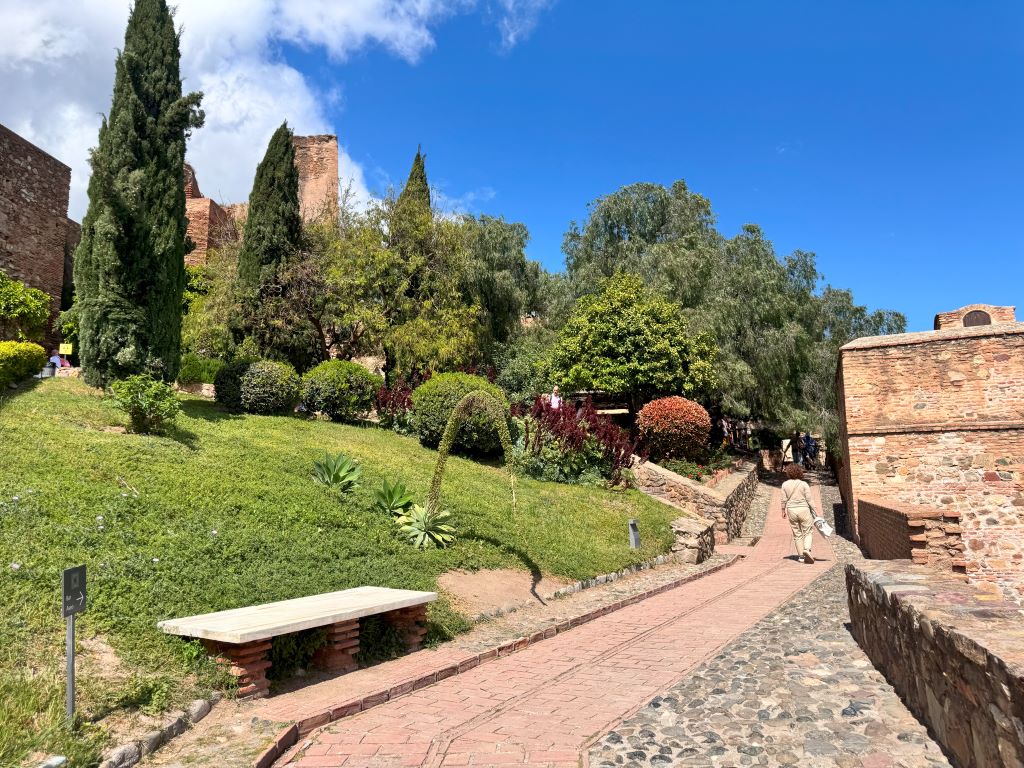
The Middle East tradition of including vegetation and water into their living spaces extends to palaces and fortifications. In the inner part of the Alcazaba there are fountains on different layers of the building, some of which are connected by thin channels of water carved into the floor. These channels take water to and from ponds, fountains or gardens.

One of the most beautiful gardens that has been recreated into the Alcazaba is in the Plaza de Armas, right before entering the main living area of the citadel. Notice the channels on the floor!
Palatial area of the Alcazaba of Malaga

Beyond the Door to the Granada Quarters starts the most private area of the Alcazaba of Malaga, the area where the rulers lived.
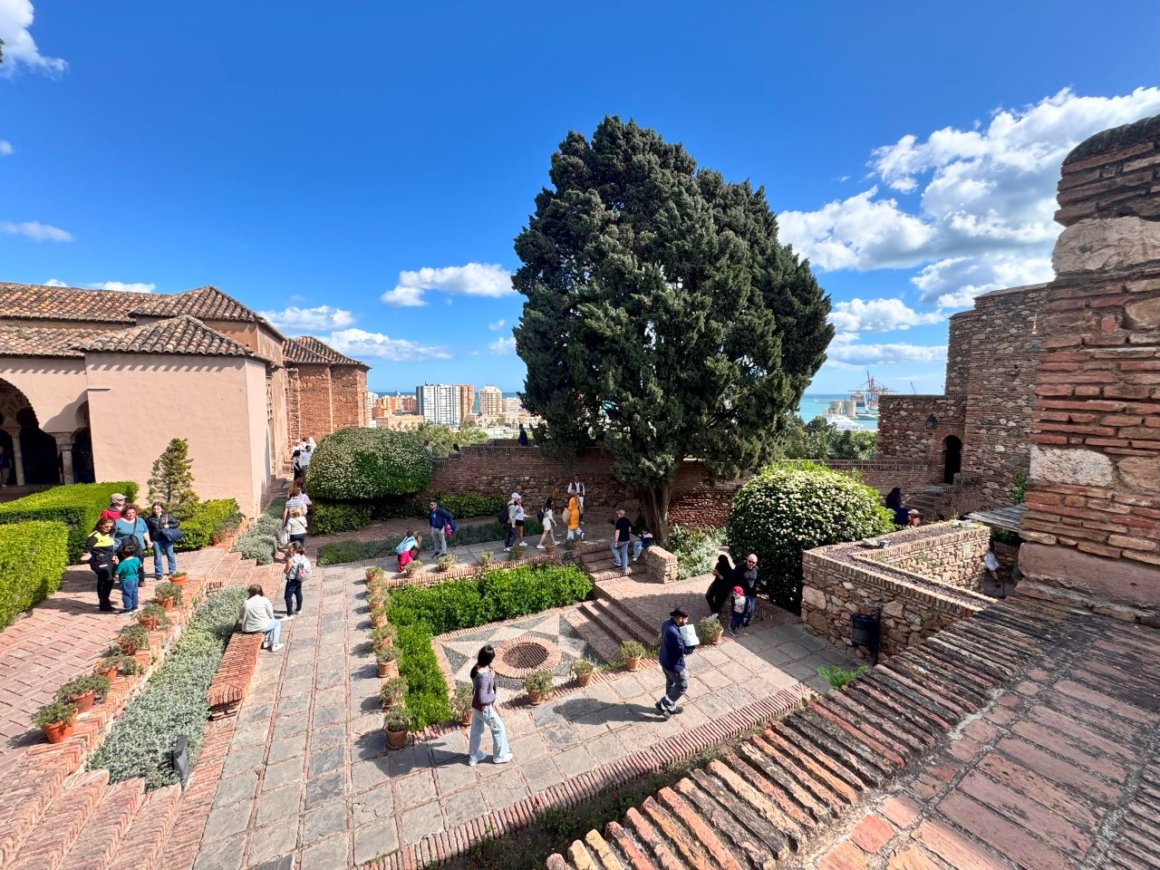
Much of this part has been destroyed during the years that the Alcazaba remained neglected, though. The buildings have been reconstructed based both on historical data and on pieces that have been found during the excavations, but much of it remains as a blank canvas, waiting for new pieces or information that will bring these building closer to its glorious past.
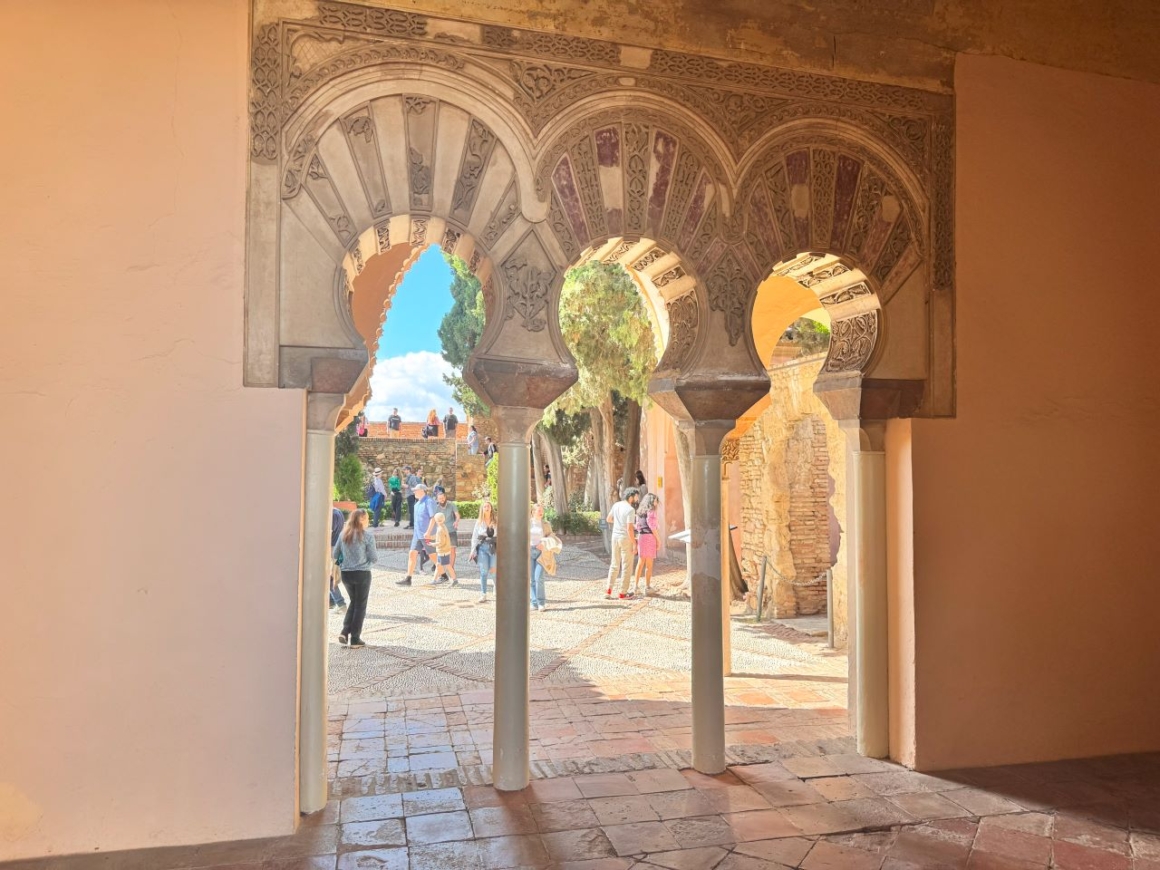
As the work progresses, more pieces and more of the history of this magnifique fortress emerge. One amazing piece of art – my favorite in the Alcazaba – is the intricate woodwork at the ceiling of the room called Torre de la Armadura Mudejár. Look at this:
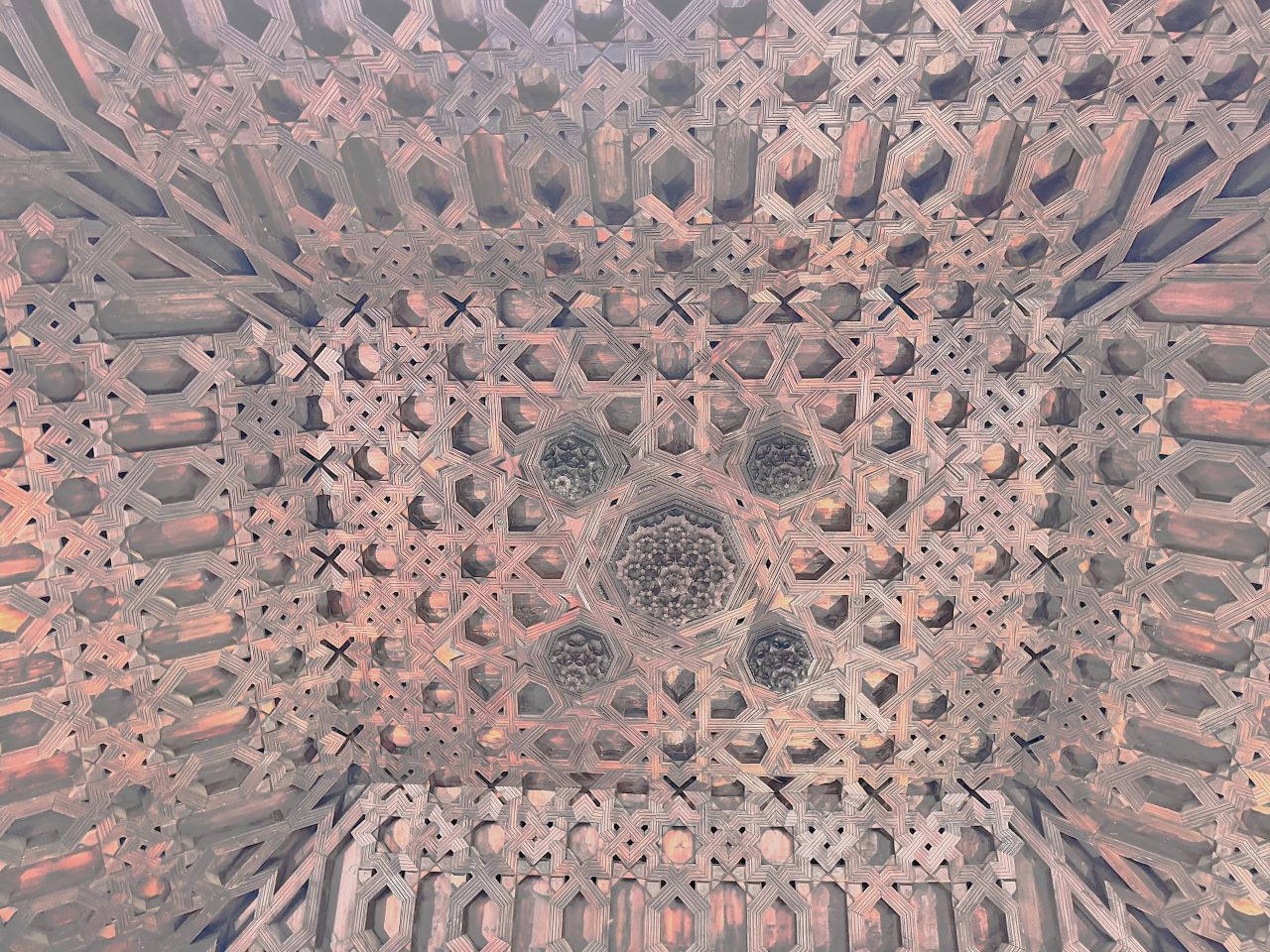
The pieces that are being found or that have remained tell a story of building crafted to the minimal details. Below, two examples: on the left, a window in one of the palatial rooms; on the right, a carving on the side of a wall, about 30 cm tall.
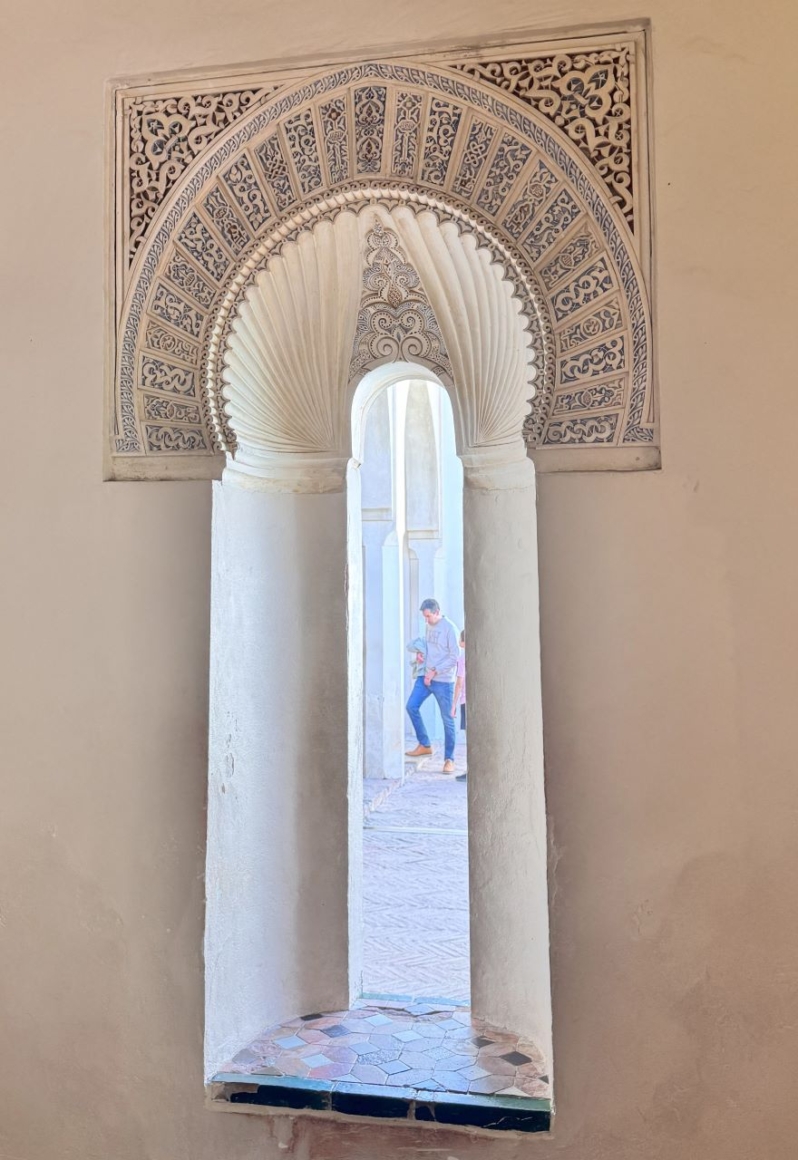

The patios are perhaps the area in the palace that have kept the most of its original architecture. Below, the Patio de los Naranjos, were water and vegetation helped to ease the summer days – weather control at its best – sided by ornated arches.
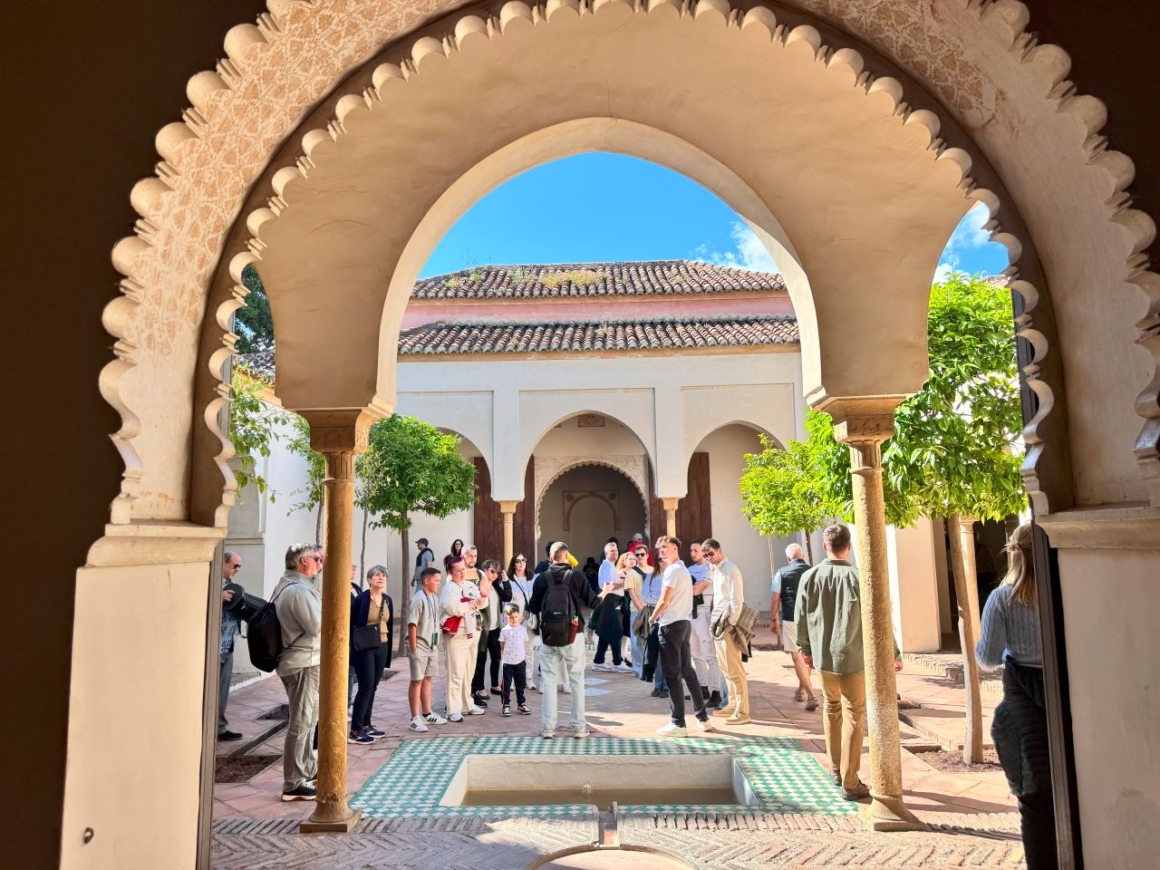
Views from the Alcazaba
It’s hard to look elsewhere while in the Alcazaba, but when we manage to look around, the views are impressive:

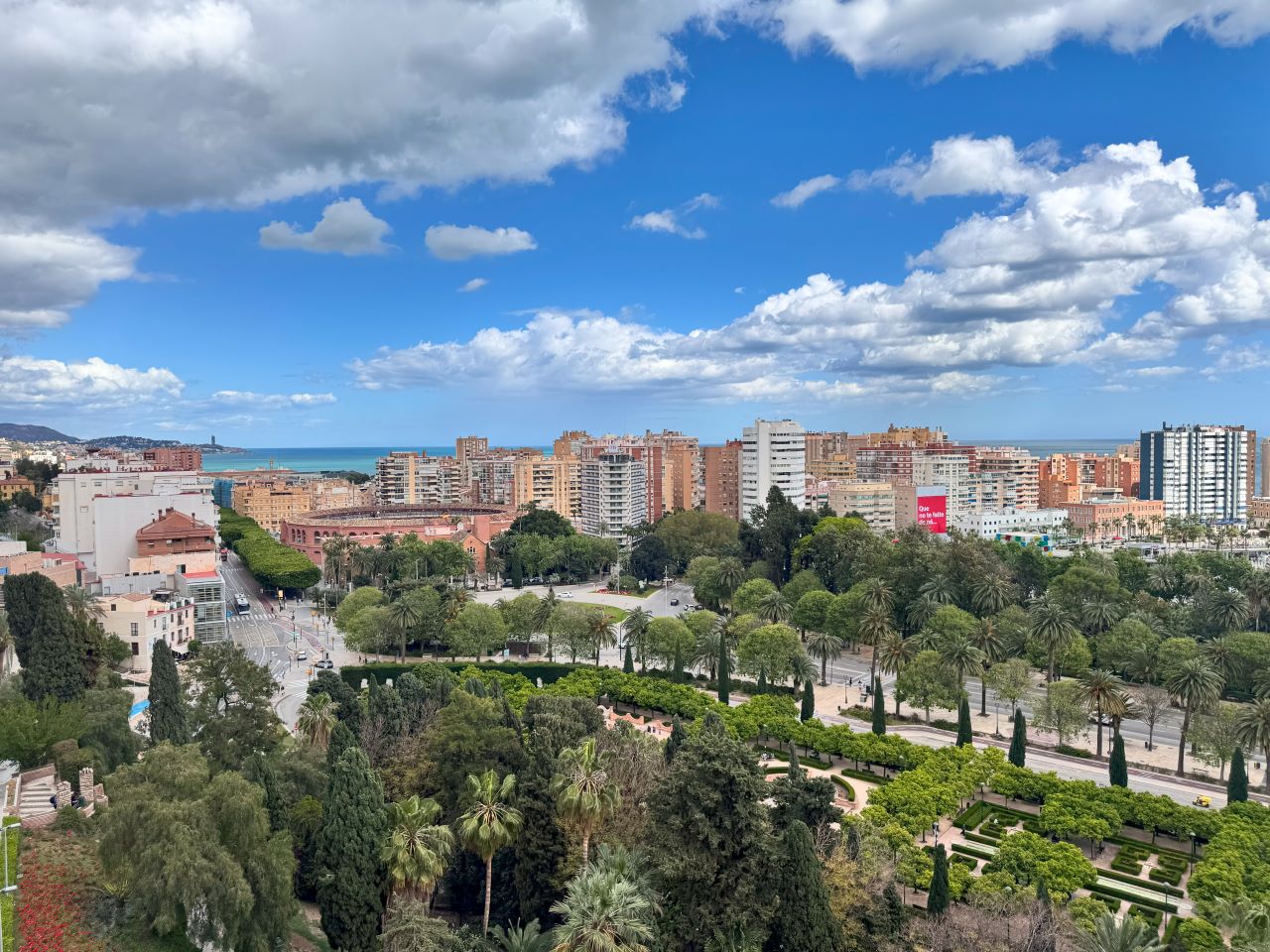
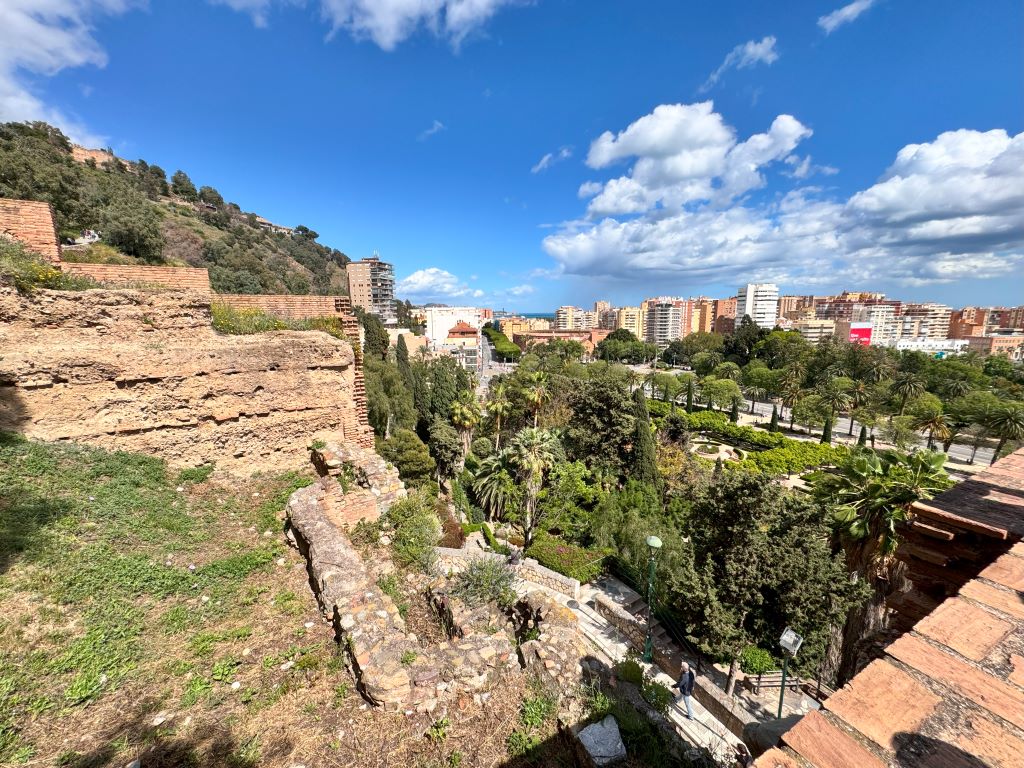

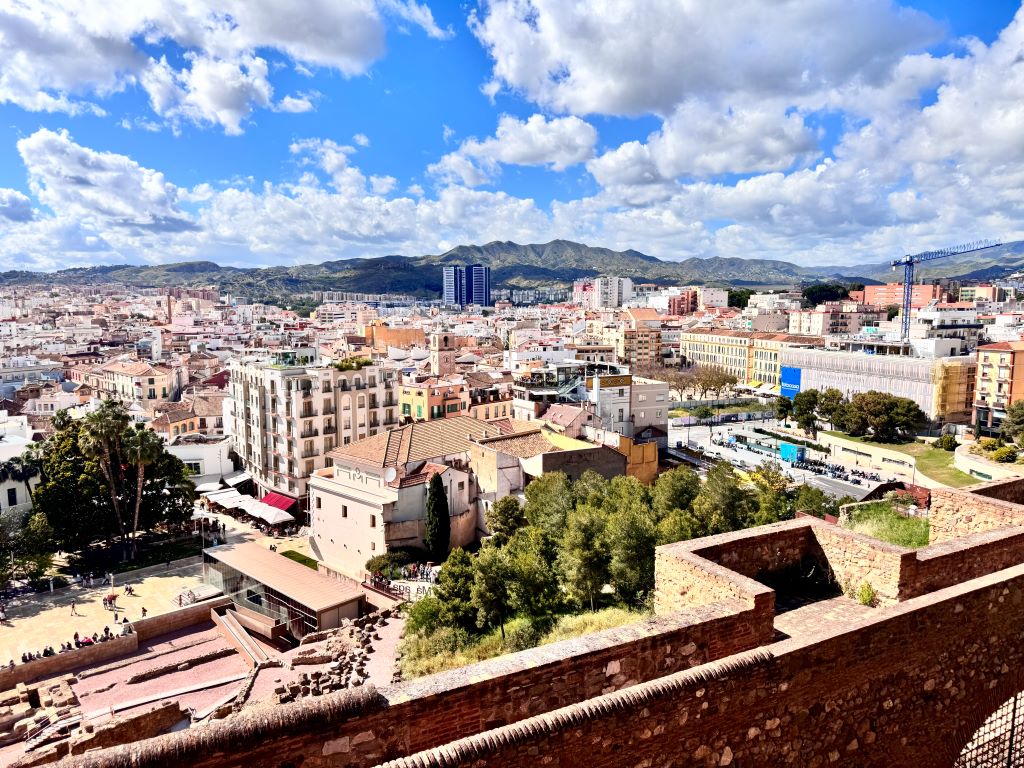
Amenities
Have you ever thought about eating a pizza inside the Alcazaba? Well, I hadn’t, but turns out we can do that. There is a small restaurant inside the grounds, conveniently located after the maze part of the Alcazaba – after we have been walking for a while, I mean. It has tables and it sells pizza and other foods or snacks, beverages and popsicles. It was very popular the day I was there!
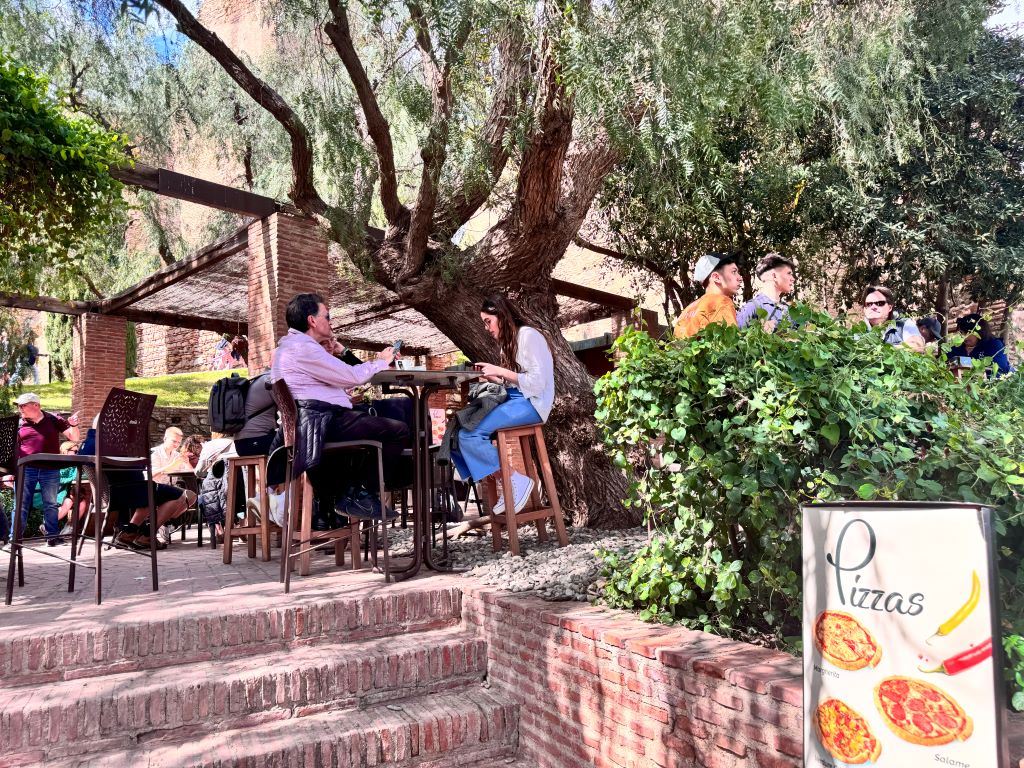
There are also several bathrooms available for the public and a few vending machines with soda and water in the interior of the Alcazaba, in the covered areas – the former palace and living grounds.
How to get to the Alcazaba of Málaga
Being right by the city center, the Alcazaba is very easy to reach by every means of transportation… except maybe private car, because it would be difficult to find a place to park. Uber, Bolt and taxis certainly know the place, though! You can get directions to get there from the place where you are (or will be staying), below:
Alcazaba by train
Easy peasy. Get out of the train in Malaga Centro Alameda Station (the last stop) and go towards the city center following the Alameda principal – a large road sided by large sidewalks; a nice walk in itself. Turn left when you reach Calle Molina Lario, and proceed as shown below. It is a 15 – 20 minute-walk to the entrance.
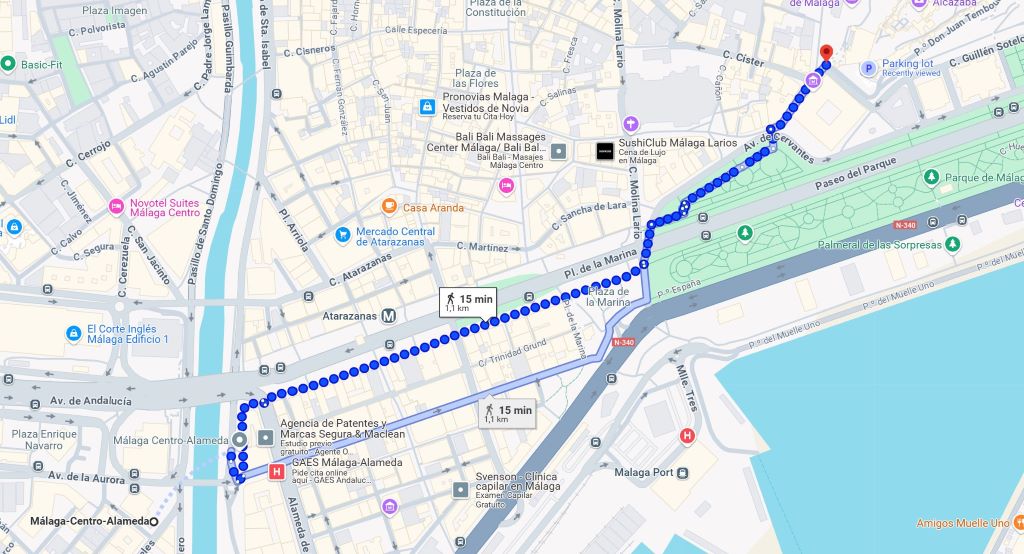
Alcazaba by bus
If you are in Malaga, there are several bus lines that can get you close to the Alcazaba. Look for buses that can either get you to either the street called Paseo del Parque or to the Plaza de la Merced:
– Paseo del Parque – lines 1, 3, 4, 11, 32, 33, 34, 35, C1, C2, N1, among others
– Plaza de la Merced – lines 1, 36, 37, C1
Also, as a precaution, check the EMT site for updates about bus lines and routes.
Tickets to the Alcazaba
You can buy tickets on the spot or online, in the official page. (It could be improved, I know). Tickets cost € 3,50 per person as a rule; € 2,50 per person in a group of at least ten people and € 1,50 for students, retired people and people with disabilities.
The Alcazaba can also be visited for free every Sunday from 2 pm and on Museum Day (May 18), like many other remarkable places in Malaga. While most museums get crowded during the free-visitation times, the Alcazaba does not, because it is much bigger than the other places, and therefore can accommodate a lot of people. It is worth visiting the Alcazaba on the free times for sure!
There is a QR code for a free audio guide right by the entrance, so you may take your phone and earphones with you if you plan to listen to the audio guide. I visited the Alcazaba once listening to it and in my opinion, it focuses too much on the recent history of the Alcazaba, while the juiciest parts – the moors times, the defense strategies, the day-to-day of the Alcazaba back then – are just barely mentioned or entirely out. If you want to hear about these parts, the best thing is to book a tour.
Alcazaba of Malaga Tours
There are plenty of affordable guided tours to the Alcazaba in Get Your Guide, many in English and some in other languages as well. In my opinion, the tours do enhance the visit to the Alcazaba. Without the tour, you’ll be visiting a beautiful place, from which you have amazing views of Malaga (still worth visiting); with the tour, you also get the Alcazaba of times gone by, so you can understand it, more than just seeing it.
Alcazaba of Malaga visitation times
Summer hours, from April 1 to October 31: from 09:00 am to 08:00 pm
Winter times, from November 1 to March 31: from 09:00 am to 06:00 pm
In both cases, the last admission time is 45 minutes before closing time. In my opinion, it takes at least one hour to visit the Alcazaba, perhaps two if you take many pictures and really enjoy visiting outstanding, historical monuments.
In any case, I would recommend you avoid going there during the hottest hours of the day on summer, as much of the area is open – you’d be walking uphill directly under the hot, hot, hot sun of the Costa del Sol.
Where to stay near the Alcazaba
As the Alcazaba of Malaga is located right by the center of Malaga, staying near it implies easy access to much of what Malaga has to offer. On the map below you can see the Alcazaba and several offers of both hotels and vacation homes in the surrounding areas; pick your dates, number of people coming and book your stay! 😉
Conclusion
When in Malaga, the Alcazaba is a must. It is a very interesting place which offers great views of the city, so you’ll be both watching the present and the past of Malaga from one place. Do not miss the opportunity to see for yourself this beautiful piece of art, history and architecture.
